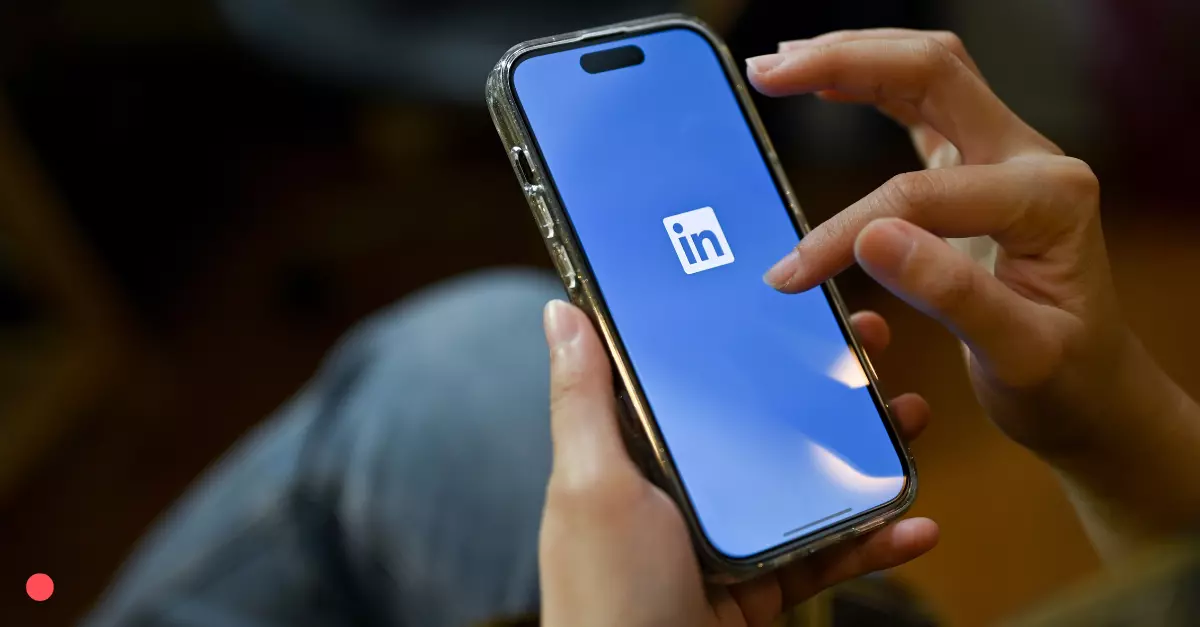In this blog, we talk about freemium business models and how businesses use (and can use) this acquisition strategy to generate sales leads.
What is a freemium business model?
When it comes to choosing a pricing model for a product or service in the B2B space, determining the ideal is a struggle for many companies.
Firstly, what’s on offer needs to be coherent and match the expectations of the ideal customer. This means offering something that solves a clear need.
Secondly, companies also need to be careful to not undersell the value of their product or service, so competitive pricing is incredibly important.
But regardless of the price of the product or service, one of the most difficult hurdles to overcome is getting people to purchase and start using the product.
As a result, many companies have (and successfully) adopted the so-called “freemium” business model (you might have guessed it, the word “freemium” is a combination of “free” and “premium”). Popular sites like Spotify, LinkedIn or even online newspapers have all adopted this pricing strategy, whereby users can sign up for a free account and later on upgrade to a paid (or “premium”) plan to unlock more features and functionalities.
But this pricing model has not only been adopted by B2C companies, many B2B businesses also use free plans to generate new leads. Let’s take a look at how this works.
What are the benefits of providing freemium products?
You might be thinking: “How on earth do companies make any money by giving away their products and services for free?” Well, this great quote by Phil Libin, CEO of Evernote, highlights the point of freemium products and services:
“The easiest way to get 1 million people paying is to get 1 billion people using".
The goal of the freemium model is to lower customer acquisition costs (CAC). By providing a free version of your product, you eliminate any barriers to entry. If people want to buy it, all they need to do now is provide their payment details (you’ll already have their name and email address).
You can also use the data from your free users' behaviour to work out what features of your product are working well and which aren't. You can go even further and break down your user base by market segments (or buyer personas) to see who gets the most out of it.
Another advantage of the freemium model is its ability to build trust. When it comes to investing in large software-as-a-service (SaaS) or technology platforms, your prospects will want to see how and if the product works for them before making a decision.
Going freemium might sound like a no-brainer, but before you decide this acquisition model is the right one for your business, you should also assess the other side of the coin.
What are the risks of providing products for free?
Generally speaking, when a brand provides a free version and a paid version of its product, users expect to get a lot more from the paid version. So rule number one for any freemium product is to give customers a taste but clearly state the additional value they can get by upgrading to the paid version.
But here’s the kicker: freemium products – particularly in the B2B space – require some initial upfront investment. Because of the nature of the model, most freemium providers end up with a lot of “trial” customers (on Spotify for example, more than half of their users are on a free plan), so the challenge is converting trial users into paying customers.
So to make this acquisition model work for you, you need to focus on your “freemium-to-premium-customer” conversion rate.
Just as you would nurture website visitors with a traditional content marketing strategy – moving them through the buyer journey – you need to nurture trial users through the sales cycle. This can be done through in-app notifications highlighting the features of the paid plan.
Examples of B2B businesses using freemium for lead generation
Here are a few examples of companies which offer a freemium plan (it’s worth noting that some target both B2B and B2C or get individuals to sign up before they can upgrade to a paid plan for their whole business).
- Canva: Probably one of the easy-to-use design tools out there. Canva helps you to create imagery for anything without the use of complex design tools. You can use it for free (which is great for testing how the design tools work) before signing up for the paid plan.
- SurveyMonkey: One of the most popular survey platforms, with millions of users worldwide. Although there’s a free version, its capabilities (such as the number of questions and responses) are limited. SurveyMonkey clearly states the value of upgrading to a paid plan on their pricing page.
- Dropbox: A simple but effective cloud storage solution for individuals and businesses. It’s free and easy to sign up to but the 2GB storage limit will be a problem for frequent users. Upgrade to the paid plan for more space.
- Zapier: Connect apps and move data between them with ease. We’ve been using this for many app integrations with HubSpot. Zapier also provides free and paid plans, so if you want to test how the app integration works, sign up for the freemium version first.
- Evernote: If you want to keep your notes organised and in one place, this is the perfect tool to use (unless you’re old school and prefer using paper notepads, of course). There’s also a freemium plan which includes the option to upgrade to a paid plan to enable team collaboration and other integrations.
- HubSpot: HubSpot offers an ever-growing stack of integrated marketing, sales and customer service tools. HubSpot is very transparent with its pricing, and you can customise your plan based on the tools that are most relevant to you. Before getting started with a monthly paid plan, however, it’s worth signing up for a free account so you can check out HubSpot’s user-friendly CRM, email tool, chat functionalities and more.
- Slack: Slack – one of our team’s all-time favourite chat tools – is another great example of freemium done right. Similar to the platforms mentioned above, Slack uses its free version to generate leads, later prompting them to upgrade to a paid plan for additional features and functionalities.
Generating B2B leads with a freemium business model
So, taking all the above into account, here’s how you generate leads using a freemium business model:
First, conduct a careful review of your product and pricing strategy. It's important to clearly define what you can offer for free. More advanced features and/or bespoke options should come as part of the paid/premium version of your product/service. For example, you could limit features and storage limits or offer less support.
Though a freemium business model can help you generate leads (and at a lower cost) it does require some initial investment:
- You have to be certain your product is the best of its kind or one of the best
There's no point in offering a free version of your product if it's not something people want to get their hands on. Long-term users will eventually convert to paid users - but that's only if they can get value from your product.
- You need to minimise your distribution costs - after all, you're giving away a version of your product for free
It needs to be easy for you to duplicate and distribute your product without incurring massive costs. With Software-as-a-Service and cloud-based platforms, the cost of distribution should be negligible.
- It needs to be easy to use
Your product needs to be simple enough for customers to educate themselves. They shouldn't have to ask for help with the free version or even the paid version of your product.
- You need to be operating in a market space with lots of activity
Needless to say, you need to be operating in a busy space if you're giving a version of your product away for free. This will give you better market potential as only a small percentage of your free users will be converting into paying customers.
- It has to deliver value constantly
When you think about Spotify, Canva, Dropbox and the like continuing to bring in new customers... but how? They add new features to keep users coming back for more! You have to look at ways of increasing the 'value' of your product. User commitment reduces considerably when they get it for free, so what can you do to keep customers coming back for more? Discounts, new features, and support are all good ways to deliver value.
- Upgrade paths need to be clear
Potential customers want to know what they'll be getting when they upgrade. Work out how to delineate your product tiers.
How to develop a freemium strategy that generates B2B leads
Next, you will need to map out your conversion strategy and define how you are going to convert your free users into paying customers.
It's important to note that early adopters of your product/service are less price-sensitive than others. They will have acquired your product/service on the basis of market opportunity/value - for them, the value proposition is incredibly compelling. So it's likely that at the launch of your product (and with a bit of good marketing and PR) you will have several B2B freemium leads.
Over time, however, conversion rates will gradually decrease as your user base expands and your product starts to reach the early and late majority. These groups are more price-sensitive and may not see the value in your product. There will also be those who arrive very late (laggards) and will be difficult to convert without 'major' product updates or incentives.
So it's up to you to devise strategies for these market segments and communicate the value of your offer to them. This is where the promotion of your product via your website, social media channels, email marketing and PR can help.
Also, those using your free product and loving it will eventually become evangelists for it. They'll either become subscribers or draw in new B2B freemium leads. You can increase the number of referrals you receive by providing incentives and communicating with your user base.
As well as using the methods above, you might have to do some testing to see which conversion methods work best for your audience. Consider calls-to-action or in-app notifications. What you need to do is ensure that at every opportunity you're reminding long-term users, there's a paid option available with more sophisticated options. It's pointless having loads of free users and not doing anything with them as this will put a strain on your hosting solution and customer service.
Conclusion
Freemium business models won’t be right for every company, but if yours provides online software services that can be obtained through purchase or subscription, meets a need, are the best in its particular space and can deliver ongoing value, you might want to think about adding a free plan to your pricing model.







.png)





